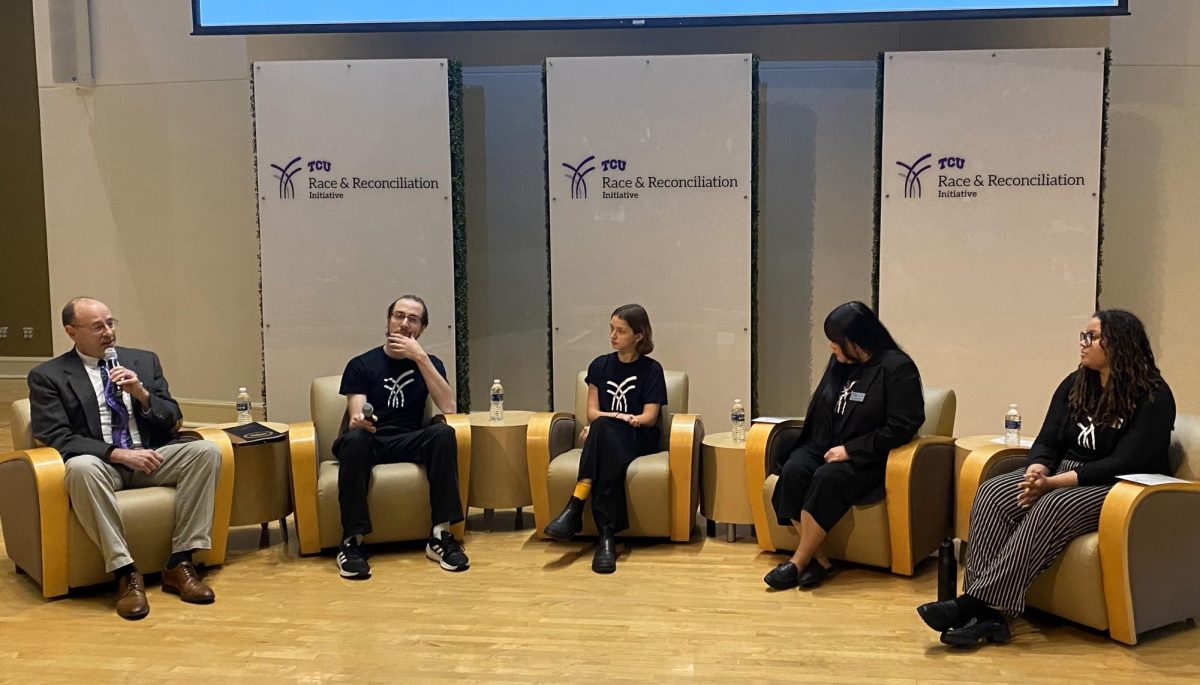TCU engineering students worked all year turning an idea into reality.
At the request of the University of North Texas Center for Human Identification, the students created a machine that can safely extract a fragment from a bone within 15-minutes. In addition to the safety features, the machine cuts the extraction time in half.
In addition to building and designing the machine, the students put in more than 200 hours testing the machine in their Senior Capstone Design course.
Rhonda Roby, professor at J. Craig Venter Institute who envisioned the idea, cried as she thanked the students for realizing her dream.
Roby said as a professor it is her goal to pass on her passion to other people. She succeeded as the students took one of her ideas and made it into a product.
UNT receives hundreds of bone samples each year from all around the country to be identified. The process of extracting bone fragments is unsafe, risky and time consuming.
“It’s not what I envisioned, but its much better,” Roby said. “Ideas don’t always make it to a product.”
Each year senior engineering majors complete the Capstone Design Course. The 40 students are split into two groups to create two different inventions as their final projects.
Tristan Tayag and Bob Bittle, professors of engineering, advise all senior engineering majors in the course.
Each year Tayag and Bittle speak with different companies in the community about inventions that would be beneficial.
The companies fund the roughly $40,000 projects and the students create a machine that satisfies the customer.
This year UNT and Axxis funded the two projects.
Tayag met Roby at a conference in California where she explained her idea. He told her he had a group of students that could make it happen.
Roby used to work at the University of North Texas Health and Science Center as an associate professor and said she understands the time and effort it takes to identify bones.
Tayag said the purpose of the capstone project is to manage and execute a project for a real customer.
It is engineering in a corporate setting where the students are able to show what is possible, Tayag said.
There were 21 students on the team with senior Michael George acting as the project manager.
“George is a strong technical and managerial leader and the team was the most cohesive team I have ever mentored,” Tayag said.
George said the project would not have been able to be accomplished without the incredible community at TCU and amazing faculty.
The students gave a 45-minute presentation explaining the product to family, friends and UNT faculty and staff.
This idea and project was so unique and the students worked well together, said Marilyn Gilbert, mother of Jena Gilbert, senior engineering major.
The students were able to use hands-on and problem-solving skills, which is what engineering is all about, Gilbert said.
“This project does a lot for the prestige of the TCU engineering school,” Gilbert said.
The students were broken up into four teams to create the machine.
The four teams were the cutting, cleaning, mounting and software teams.
The cutting team was in charge of creating and designing a tool that could effectively and efficiently to extract a smaller piece of the bone.
The cleaning team was tasked to clean the area where the bones are cut so cross contamination from bones does not occur.
The mounting team crafted a device to hold the bone steady while it is being cut.
The software team created a computer generated system that inputs the details of each bone.
“Sometimes the project was stressful and other times it was laid back but I learned a lot,” said Yolanda Mashni, a senior engineering major who was on the cleaning team.
The project looks really good on my resume and it peaks a lot of people’s interest, Mashni said.
Mashni will be working for Jacobs Engineering after graduation as a mechanical design engineer.
Roby said she believes in the machine and knows that it will be able to be made better since this is only version one.
“People all around the world will use it,” Roby said.



